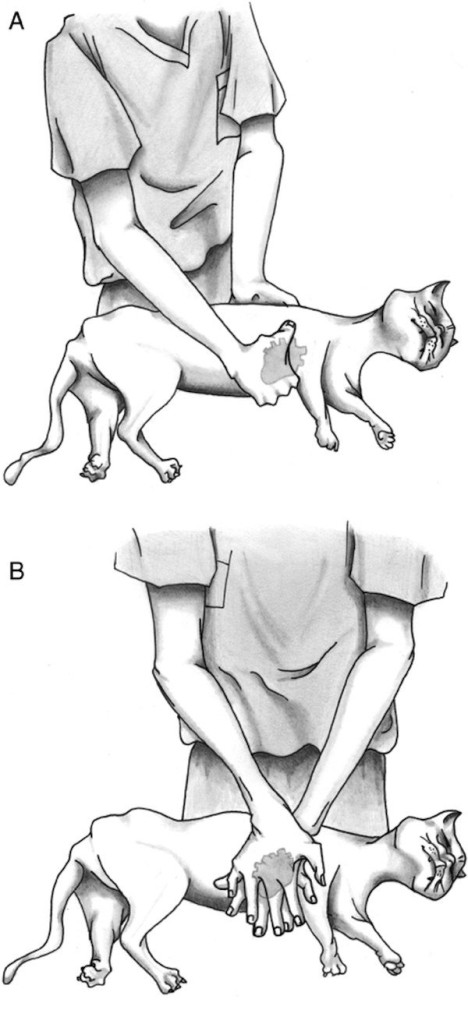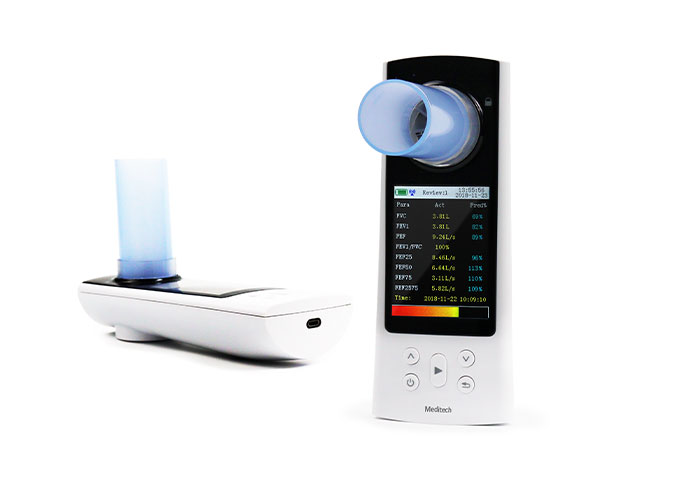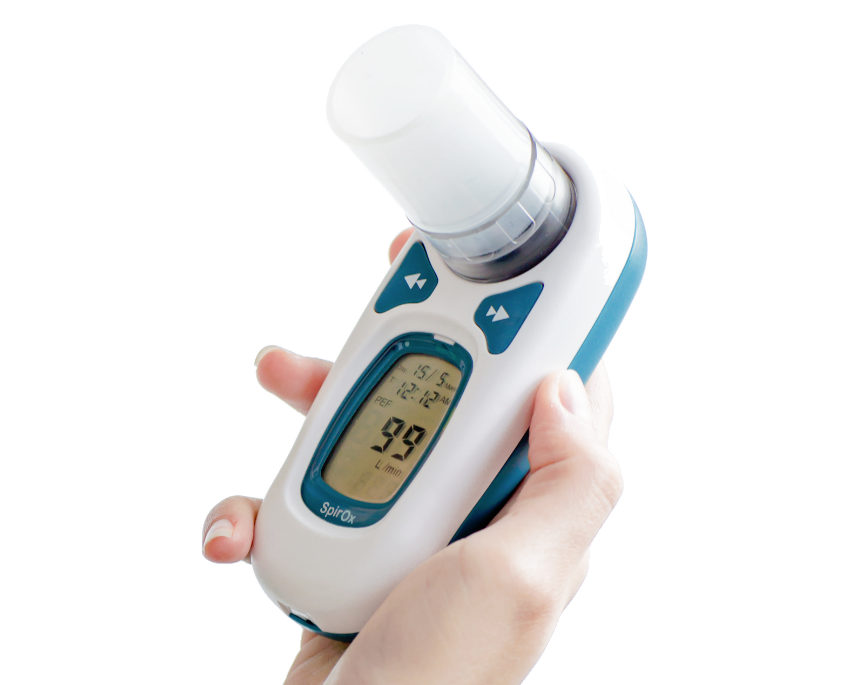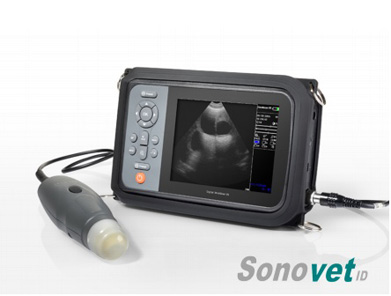Do you know how to perform CPR on your pet if they suffer a breathing or cardiac emergency?
Since there is not an ambulance to pick up your dog or cat, YOU will always be their first responder. Knowing how to perform CPR could save their life or give you time to reach the Vet. As you may know, meditech Defibrillator is a dog-friendly company and several of us bring our furry companions to the office so we want to always be prepared to save the life of our co-workers, human or four-legged.
As posted originally on DogHeirs, the primary recommendations for performing mouth-to-snout resuscitation are:
• Perform 100-120 chest compressions per minute (to the beat of “Stayin Alive”)
• Perform a compression to mouth-to-snout ventilation ratio of 30 compressions followed by 2 breaths
• Perform chest compressions according to the different chest types and sizes of dogs (see diagrams from Journal of Veterinary Emergency and Critical Care below).
The key to CPR is remembering the ABCs: Airway, Breathing, and Cardiac compression.
To perform the ABCs, follow these steps.
1. Lay the dog on a flat surface and extend the head back to create an airway.
2. Open the jaws to check for obstructions, and if any exist, try to dislodge the object.
3. If the dog is not breathing, cup your hands around the dog’s mouth so that only the nostrils are uncovered. Blow air into the nostrils with five or six quick rescue breaths, depending on the size of the dog (until you see the chest rise and fall). For smaller dogs and puppies, your mouth will cover both the nostrils and mouth. Smaller dogs require short and shallow breaths. Larger dogs need longer and deeper breaths.
4. Check for a heartbeat by using your finger on the inside of the thigh, just above the knee. If you don’t feel a pulse, put your hand over the dog’s chest cavity where the elbow touches the middle of the chest. If you still don’t find a pulse, have one person continue breathing into the nostrils (mouth to snout), while another gives chest compressions. If you are alone, do the compression and mouth-to-snout ventilation yourself.
5. Give chest compressions by placing both hands palms down on the chest cavity of the dog.
• For most dogs, chest compressions can be performed on the widest part of the chest while the dog is lying on his side.
• For dogs with keel-shaped chests (i.e. deep, narrow chests) in breeds such as greyhounds, push down closer to the dog’s armpit, directly over the heart.
• For dogs with barrel-chested dogs like English bulldogs lay the dog on its back and compress on the sternum (directly over the heart), like people.
• For smaller dogs and cats chest-compressions scan be done with one hand wrapped around the sternum, encircling the heart or two-handed on the ribs.
• For large dogs, place your hands on top of each other.
• For very small dogs or puppies, place one hand or thumb on the chest.
6. Use the heel of your hand(s) to push down for 30 quick compressions followed by 2 breaths of air and then check to see if consciousness has been restored. If consciousness has not been restored, continue the compressions in cycles of 100 to 120 chest compressions per minute (the same rhythm administered for people to the beat of “Stayin Alive”).
7. Perform CPR in 2-minute cycles checking to see if breathing and consciousness has been restored.
The following diagrams illustrates where to perform chest compressions on dogs with different chest types. Figure (A) illustrates the technique for most dogs. You can apply chest compressions to the widest part of the chest while the dog lies on its side. Figure (B) illustrates the technique for dogs with keel-shaped chests. Figure (C) illustrates the technique for barrel-chested dogs.
Dogs CPR Diagram

Image credit: Journal of Veterinary Emergency and Critical Care
For small dogs and cats chest compressions can be administered two ways. Figure (A) illustrates wrapping one hand around the sternum while supporting the back. Figure (B) illustrates two-handed compression.
Small Dog & Cat CPR

Image credit: Journal of Veterinary Emergency and Critical Care



















